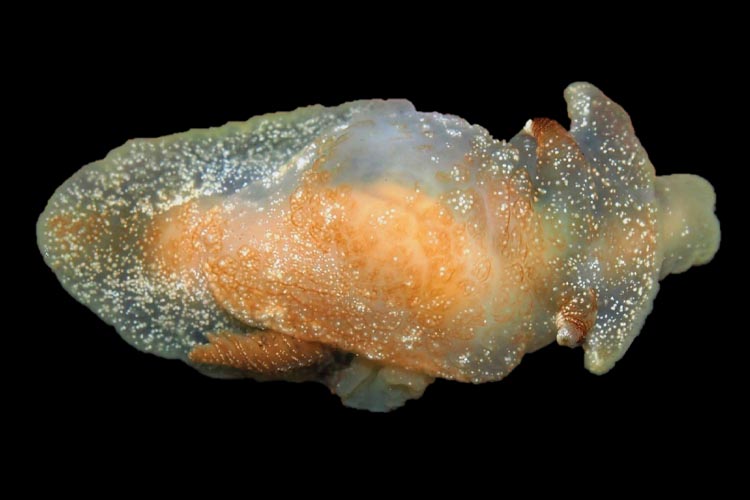
Scientists have been left surprised at the recent discovery of a brand new species of sea slug off the coast of southwest England
‘Sea slugs’ are a diverse, fascinating and vitally important group of creatures, from the brightly coloured, macro photographer’s favourite, nudibranchs, to others that are distinctly less glamourous, more closely resembling those of their terrestrial counterparts.
Sea slugs are marine gastropods, shell-less molluscs that occur in most marine environments, from the tropics to the poles. They are hermaphrodites – having both male and female reproductive organs – although they are incapable of fertilising themselves, and must find a mate to reproduce. Some sea slugs are cannibalistic and some, like plants, can actually photosynthesize, by extracting photosythetic chloroplasts from their diet of algae.
Until recently there were thought to be more than 2000 known species of sea slug, but now, thanks to the recent discovery of a new species off the coast of southwest England and Spain, we can make that more than 2001 known species!
Discovered during routine fisheries surveys by scientists from the Centre for Environment, Fisheries and Aquaculture Science (CEFAS) and the University of Cádiz, Spain, this new addition to the sea slug family is a type of side-gill sea slug – species of which have their gills externally located on the right side of the body. The newly described mollusc measures between two and five centimetres long, and has been given the patriotic name Pleurobranchaea britannica.
Related articles:

When it was first discovered, it was actually misidentified as the already well-known Pleurobranchaea meckeli, commonly found in the Mediterranean Sea , and the North Atlantic Ocean around the coast of Portugal and Cape Verde. The fact that this particular species hadn’t been recorded in UK waters before meant that questions were raised about its identity, and after detailed DNA analysis and physical examinations by scientists from the University of Cádiz it was finally concluded that a new species had been discovered.
With examples of the new sea slug having been discovered off the coast of Devon and Cornwall (the South Ham’s coast of South Devon seems to be a real hot spot for them) and a smaller number in the waters offshore of the southern Spanish city of Cádiz, scientists believe the slugs’ range may extending down the coasts of France, northern Spain and Portugal – but what makes the discovery so special is that it marks the first recorded instance of a sea slug from the Pleurobranchaea genus being found in UK waters.
Commenting on the findings, Ross Bullimore, a marine ecologist with CEFAS who was part of the team which collected the specimens, said, ‘It is exciting to see that routine fisheries surveys can still lead to such discoveries. It only took a brief inspection of two specimens to be confident that we had stumbled upon a species of Pleurobranchaea.
‘This was thrilling because no other species from this genus had been documented in UK waters, or even this far north,’ added Bullimore. ‘After close collaboration with the University of Cádiz, who carried out a more thorough assessment, we were blown away to discover that we had identified a third, new species.
‘There is often an assumption that we know everything there is to know about species found in UK waters, but this just goes to show that there is still so much to learn in our own backyard’.
The complete study, ‘First occurrence of the genus Pleurobranchaea Leue, 1813 (Pleurobranchida, Nudipleura, Heterobranchia) in British waters, with the description of a new species’ by Martina Turani, Leila Carmona, Peter J Barry, Hayden L Close, Ross Bullimore, Juan Lucas Cervera is published under an Open Access License in the online journal Zoosystematics and Evolution.
- Half of all mangrove forests at risk of collapse - 14 July 2024
- Fibreglass particles discovered in oysters and mussels - 4 July 2024
- Grey whales in the northeastern Pacific are shrinking - 19 June 2024


